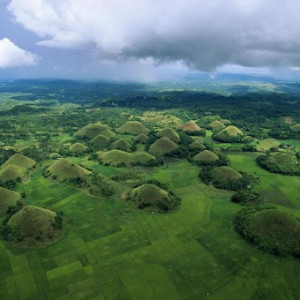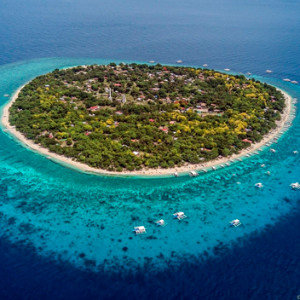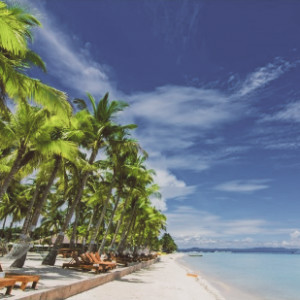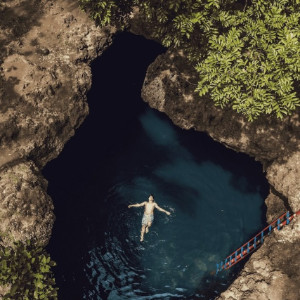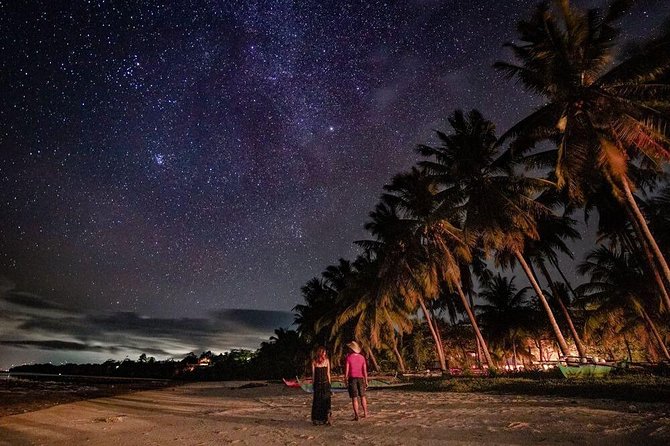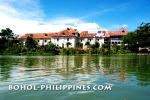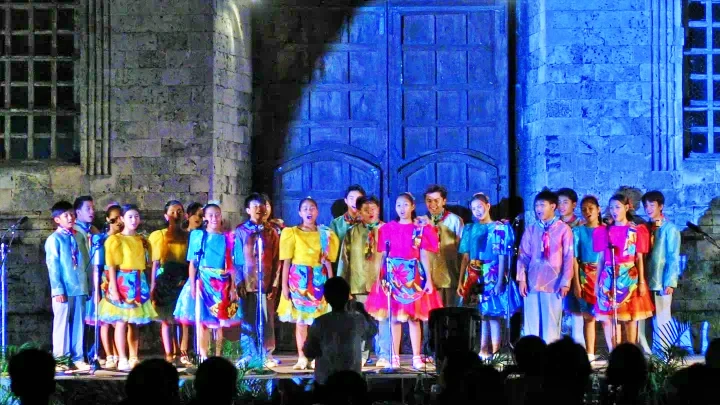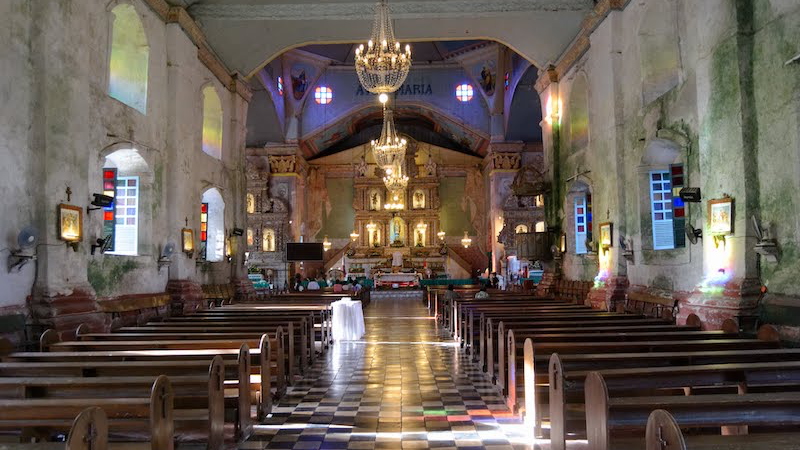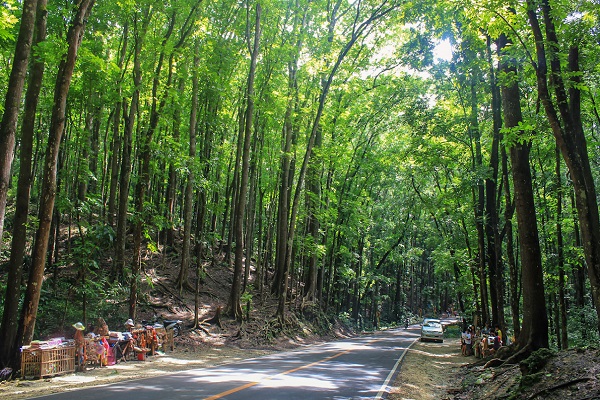Baclayon Museum
Secure your Cebu Bohol ferry tickets today to start your unforgettable journey!
The Baclayon Museum is another attraction of Baclayon. Aside from the centuries old Baclayon Church which is deluged by tourists almost daily, the museum is likewise a tourist destination. In fact, a visit to the church is not complete without a stopover at the museum.
The museum lies inside the Baclayon Church premises about 6-7 kilometers from Tagbilaran City. One can hardly miss the dark and imposing structure of the church since it is along the national road; very accessible by bus, hired van or private ride.
The museum is housed inside the old convent which lies alongside the back portion of the church. Adjoining it is the Immaculate Conception Academy and a wide open space at its front that can serve as a parking area for vehicles.
The museum charges a minimal entrance fee of P25 per person to cover maintenance costs. Picture taking is not allowed inside the museum; however, guests can freely take pictures of the church’s interiors. Due to previous thefts of many of its artifacts, the curia of Baclayon is now cautious in allowing people to take pictures of them.
Before entering the museum, guests can first have a look at the interior of Baclayon Church, especially of its majestic altar and the frescoes above it. There are many items of note inside the church which also dates back to the 16th century such as the statues, carved seats and intricate designs. In fact, the Baclayon Church is a museum in itself minus the vestments, the hymnals covered with animal skins and the like.
Although small in size, the museum carries a handful of religious artifacts that interestingly showcase the legacy that the Spaniards left on our beloved island. Looking at these artifacts, especially the vestments which are embroidered with gold, we relive the moment when these was worn, oh so elegantly!
Aside from the ecclesiastical vestments, there are other items on display which were used during the ritual of the Mass that dates centuries back such as the hymnals or the cantorals of Baclayon. The hymnals are big and written in Latin. What is of note is that the covers of the hymnals are made of animal (carabao) skin, the pages are of sheep skin and the ink used was taken from plant sap.
The “Misa Baclayana”, a musical setting for the Mass was found inside these hymnals and has been revived and is part of the repertoire of the Loboc Children’s Choir. Other books were also well preserved and displayed in the museum. Also showcased were life-sized images of saints and other relics that clearly portray the historic event of the Roman Catholic Church.
Most of the images, especially their hands and heads, were made of ivory; this material fetches a huge price in the market leading to some of these items to be stolen and pirated from the church. To avoid further theft, taking pictures of these images, as well as other items inside the museum, is now prohibited.
Luckily enough, a stolen image of St. Blaise, the patron saint for ailments of the throat, was returned by a buyer who hailed from Metro Manila two (2) years later. If all antique buyers have the same conscience as the one above, the antique pieces of Baclayon would have remained intact.
Other antique pieces are those of Jesus Christ the Crucified, looking towards the heavens; a statue of the Blessed Virgin Mary said to be presented by Queen Catherine of Aragon to the Spanish curia; and relics of St. Ignatius of Loyola. Paintings done by a famous Filipino painter, Liberato Gatchalian, in 1859 are also displayed.
Crystal chandeliers remain intact; a silver tabernacle and an altar inlaid with gold passed the test of time and retain their grandeur. Aside from other small trinkets, elegant cups and crowns were preserved.
Interesting to note is an image of the Holy Family which was allegedly hit by a cannon ball during the world war but was miraculously left unharmed although the glass encasing it was broken. Local folks relate that on the day the image was hit, a little boy picked up the cannon ball and set it aside.
The vestment of the Baby Jesus, believed to disappear once in awhile, is almost always full of “amorsiko”, a seed of a weed that clings to clothes if one happens to pass by it. It is believed that Jesus goes on a mission and visits homes of the people of Baclayon.
This is uncanny but true. In our hometown, the image of St. Michael in Iligan City often disappears and when he comes back, his vestment is also full of amorsico. When raids are believed to happen, this phenomenon occurs. The people of Iligan take it in stride and believe that St. Michael went off and stopped the Moro raiders from attacking the city.
The Baclayon Museum is another attraction of Baclayon. Aside from the centuries old Baclayon Church which is deluged by tourists almost daily, the museum is likewise a tourist destination. In fact, a visit to the church is not complete without a stopover at the museum.
The museum lies inside the Baclayon Church premises about 6-7 kilometers from Tagbilaran City. One can hardly miss the dark and imposing structure of the church since it is along the national road; very accessible by bus, hired van or private ride.
The museum is housed inside the old convent which lies alongside the back portion of the church. Adjoining it is the Immaculate Conception Academy and a wide open space at its front that can serve as a parking area for vehicles.
The museum charges a minimal entrance fee of P25 per person to cover maintenance costs. Picture taking is not allowed inside the museum; however, guests can freely take pictures of the church’s interiors. Due to previous thefts of many of its artifacts, the curia of Baclayon is now cautious in allowing people to take pictures of them.
Before entering the museum, guests can first have a look at the interior of Baclayon Church, especially of its majestic altar and the frescoes above it. There are many items of note inside the church which also dates back to the 16th century such as the statues, carved seats and intricate designs. In fact, the Baclayon Church is a museum in itself minus the vestments, the hymnals covered with animal skins and the like.
Although small in size, the museum carries a handful of religious artifacts that interestingly showcase the legacy that the Spaniards left on our beloved island. Looking at these artifacts, especially the vestments which are embroidered with gold, we relive the moment when these was worn, oh so elegantly!
Aside from the ecclesiastical vestments, there are other items on display which were used during the ritual of the Mass that dates centuries back such as the hymnals or the cantorals of Baclayon. The hymnals are big and written in Latin. What is of note is that the covers of the hymnals are made of animal (carabao) skin, the pages are of sheep skin and the ink used was taken from plant sap.
The “Misa Baclayana”, a musical setting for the Mass was found inside these hymnals and has been revived and is part of the repertoire of the Loboc Children’s Choir. Other books were also well preserved and displayed in the museum. Also showcased were life-sized images of saints and other relics that clearly portray the historic event of the Roman Catholic Church.
Most of the images, especially their hands and heads, were made of ivory; this material fetches a huge price in the market leading to some of these items to be stolen and pirated from the church. To avoid further theft, taking pictures of these images, as well as other items inside the museum, is now prohibited.
Luckily enough, a stolen image of St. Blaise, the patron saint for ailments of the throat, was returned by a buyer who hailed from Metro Manila two (2) years later. If all antique buyers have the same conscience as the one above, the antique pieces of Baclayon would have remained intact.
Other antique pieces are those of Jesus Christ the Crucified, looking towards the heavens; a statue of the Blessed Virgin Mary said to be presented by Queen Catherine of Aragon to the Spanish curia; and relics of St. Ignatius of Loyola. Paintings done by a famous Filipino painter, Liberato Gatchalian, in 1859 are also displayed.
Crystal chandeliers remain intact; a silver tabernacle and an altar inlaid with gold passed the test of time and retain their grandeur. Aside from other small trinkets, elegant cups and crowns were preserved.
Interesting to note is an image of the Holy Family which was allegedly hit by a cannon ball during the world war but was miraculously left unharmed although the glass encasing it was broken. Local folks relate that on the day the image was hit, a little boy picked up the cannon ball and set it aside.
The vestment of the Baby Jesus, believed to disappear once in awhile, is almost always full of “amorsiko”, a seed of a weed that clings to clothes if one happens to pass by it. It is believed that Jesus goes on a mission and visits homes of the people of Baclayon.
This is uncanny but true. In our hometown, the image of St. Michael in Iligan City often disappears and when he comes back, his vestment is also full of amorsico. When raids are believed to happen, this phenomenon occurs. The people of Iligan take it in stride and believe that St. Michael went off and stopped the Moro raiders from attacking the city.
There are still many interesting items in the museum worthy to take note but it will take a long while and uses up plenty of paper and ink to cover them all. So why not visit the museum yourself and see them. To see is to believe! Come visit Baclayon soon!
Read More:
- Bohol Town of Baclayon - The town of Baclayon covers an area of 3442.1807 hectares or 34 square kilometers which is politically divided into 17 barangays.
- History of Baclayon - Baclayon played a prominent role in the history of Bohol since it was the first municipality ever to be established in the island by the Spaniards.
- Baclayon Tourist Attraction - The Municipality of Baclayon has several attractions, mostly heritage edifices such as the Baclayon Church of Our Lady of the Immaculate Conception, the Baclayon Museum, and the Heritage or Ancestral Houses.
- Baclayon Church - The Church of Immaculada Concepcion in Baclayon is considered to be one of the oldest in the Philippines. Construction began in 1717 where some 200 native laborers (obras pias) cut and dragged coral blocks from the sea, using only bamboos in moving and lifting the stones in position.
- Visita Iglesia to the Baclayon Church - Ever since I was small and at every visit to Bohol, I pass by the Baclayon Church on the way to my Dad’s place in Guindulman or to my Mom’s at Mahayag ...
- Baclayon Museum - A visit to the church is not complete without a stopover at the museum; carries a handful of religious artifacts that interestingly showcase the legacy that the Spaniards left on our beloved island. Looking at these artifacts, especially the vestments which are embroidered with gold, we relive the moment when these was worn, oh so elegantly!
- Baclayon Pastries - Baclayon is known locally as the pastry capital of Bohol. This pastry making activity dates back to the Spanish times. It is said that because of the volume of egg whites that were used for the construction of the church, the Spaniards taught the locals how to make cookies and other pastries while utilizing the egg yolks.
- Malon House, Baclayon Bohol Old Houses - The Malon House dates back to the late 19th century - the largest heritage house in Baclayon home to six (6) generations of the prominent Malon family.
- Picnic at Baklayon Sea - Stop and enjoy a picnic at the bayside of Baclayon. With the church in the background contemplate the blue green sea while finishing off your adobo chicken!
Recommended Bohol Philippines Tours
[ Bohol Sight Seeing Day Trips - Check Out Availability ]
[ Full Day Cruise and Sailing Tours - Check out Availability ]
[ Full Day Adventure Tours - Check out Availability ]
Discover more of Bohol's natural wonders through our recommended tours. Click on the links below to embark on unforgettable adventures:
Ready to explore the beautiful islands of Cebu and Bohol? Secure your ferry tickets today through 12go and start your unforgettable journey!
Ready to explore the beautiful islands of Cebu and Bohol? Secure your ferry tickets today through 12go and start your unforgettable journey!
recommended hotel booking
Book your stay in Bohol's breathtaking surroundings through Agoda and experience the ultimate relaxation
Top 25 Sights and Attractions in Bohol
- Chocolate Hills
- Tarsier Conservation Sanctuary
- Panglao Island
- Loboc River Cruise
- Hinagdanan Cave
- Balicasag Island
- Alona Beach
- Bilar Man-made Forest
- Blood Compact Shrine
- Baclayon Church
- Bohol Bee Farm
- Anda Beach
- Sipatan Twin Hanging Bridge Loboc
- Danao Adventure Park
- Sagbayan Peak
- Butterfly Conservation Center
- Clarin Ancestral House
- Dimiao Twin Falls
- Mag-Aso Falls
- Anda White Beach
- Lamanok Island
- Rajah Sikatuna Protected Landscape
- Dauis Church
- Can-umantad Falls
- Punta Cruz Watchtower
Top 20 Destinations of Bohol
- Tagbilaran City
- Panglao Town
- Talibon Town
- Anda Town
- Loboc Town
- Dauis Town
- Ubay Town
- Tubigon Town
- Loon Town
- Jagna Town
- Alicia Town
- Carmen Town
- Getafe
- Danao Town
- Bilar
- Alburquerque
- Sierra Bullones
- Sagbayan Town
- Baclayon Town
- Antequera
Ready to explore the beautiful islands of Cebu and Bohol? Secure your ferry tickets today through 12go and start your unforgettable journey!
All Rights Reserved ©2023. Bohol Philippines Travel Guide
Address: Talibon, Bohol, Philippines

